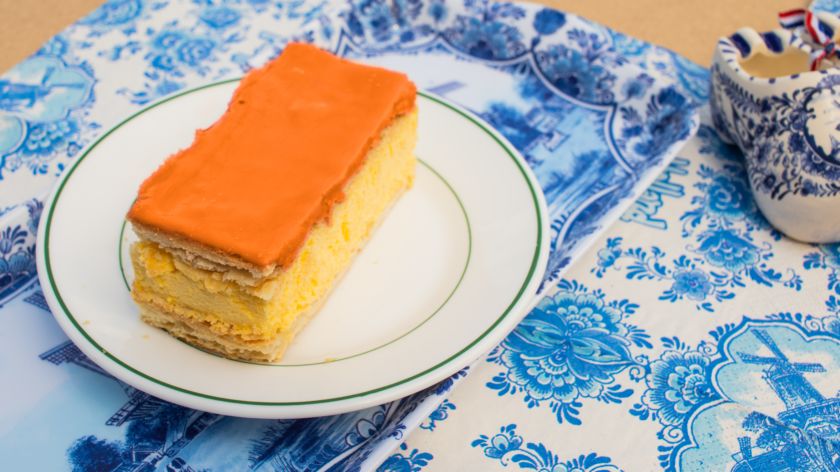‘Monarchs show their added value during disasters’
It was a strange King’s Day without street markets, parties and the king’s visit to a designated city. Willem-Alexander is a king in a time of crisis and thus plays an important role, according to researcher Fons Meijer. ‘People project their desire for stability onto the king.’
It was quite unusual to give a lecture in front of a screen, said PhD candidate Fons Meijer. During the online symposium about resilience in times of crisis, organised by Professor of European Cultural History Jan Hein Furnée, Meijer lectured on leadership in times of crisis.
‘Of course, you know that hundreds of people are watching and it’s enjoyable to tell them something, but it’s a strange feeling to talk to a screen.’ The symposium was organised to offer students a platform to meet and exchange knowledge, he explained. ‘It was set up very quickly once the university had closed, and students appreciate it. In a period in which they can’t see one another, student evidently enjoyed hearing a lecture like they used to.’
‘The people in society are often the ones who appropriate the monarch for themselves’
As part of a larger research project, Meijer is working on a PhD thesis about disasters in the Netherlands in the nineteenth century. During the symposium, he spoke about King William I (1815 – 1840) and King William III (1849 – 1890). Both monarchs ruled during major natural disasters, like the storm surge of 1825 and the floods in 1861. ‘The image of a king that arises during a crisis is often not the result of the royal house’s PR,’ said Meijer. ‘The people in society are often the ones who appropriate the monarch for themselves. I call this ‘wish mirrors’ in my lecture.’
Princess’ Day

William I didn’t make extensive visits to the areas hit by the flooding, but he did hold collections and donate money. Although he was withdrawn, poets, clergymen and other people in society spoke glowingly about him. ‘They described him as a caring father of the nation, the father of the family,’ Meijer said. ‘That was different for William III. He was described as a saving protector who shielded the country against enemy forces, in this case the water.’
At the end of the nineteenth century, the royal house also played an important role in creating unity. ‘Not only after disasters, but also when groups in society began to emancipate, such as the Catholics, Socialists and Protestants,’ Meijer continued. ‘People were afraid that the country would disintegrate when diverse groups became empowered. The royal house became a symbol for the entire nation.’ That’s when this holiday began. ‘It was originally Princess’ Day for Wilhelmina and it later became Queen’s Day.’
The way in which the monarch is regarded during a disaster says a lot about how groups in the Netherlands regard themselves, explained Meijer. ‘In the beginning of the nineteenth century, many Dutch people who needed to feel united saw the nation as a family with the king as a father. But during the reign of William III, conservative circles saw themselves as a vulnerable society in need of protection.’
Comfort and stability
Now, during the corona crisis and with Willem-Alexander as king, a lot of things are naturally different. ‘The position of the monarch in public life is now much smaller. William I involved himself in many issues, but the constitution of 1848 enforced restrictions. The king has become much less of a political figure,’ Meijer stated. But during a disaster, it’s even more important for a monarch to show that they still have added value in society.
‘The king is now trying to be clearly visible’
That was true of Beatrix during the disaster in the Bijlmer and the firework disaster in Enschede. ‘Those were two moments in which support for the royal house increased,’ Meijer said. ‘The king is now trying to be clearly visible. He can’t make many of his normal visits, so he’s going to places that have been affected by the crisis. Hospitals or companies with financial problems.’ Máxima is also very involved at the moment. ‘She’s Skyping with healthcare workers, for example.’ And it’s effective. ‘I hear the media commenting that it’s wonderful to have a royal house at a time like this. People say they find comfort and stability in Willem-Alexander. They also project their desire for that onto him.’
Of course, another factor in the present crisis and the royal house is that Willem-Alexander isn’t the only leader people are watching. ‘The rally ’round the flag effect, supporting leaders and expressing nationalism in a time of crisis, is something you also see happening with Mark Rutte,’ Meijer said. ‘The People’s Party for Freedom and Democracy is doing well in the polls. But an effect like that can also dissipate quickly. In contrast to the king, Rutte has to make political choices. Then it’s difficult to make everyone happy.’
So, if William I was the ‘father of the family’ and William III the ‘protective saviour of the nation’, what is Willem-Alexander? ‘That’s a difficult question,’ Meijer laughed. ‘It’s hard not to resort to ridiculous definitions. But the first thing that comes to mind is to describe his attitude as ‘wanting to make connections from a distance’.’




